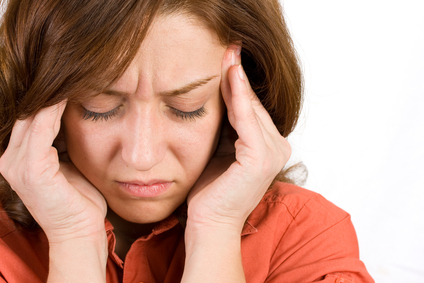Migraine headaches – their cause and effect
By Margaret Rogers
Many people who suffer from poor mental health also suffer from headaches. These can range from a mild  feeling of discomfort through to the severe symptoms of a migraine headache. According to the National Headache Foundation in Chicago, women are about three times more likely to be affected by migraines than men, with around 30 million Americans suffering from migraine headaches. They also suggest that it is migraines are the most likely type of headache to cause a sufferer to seek help from their GP.
feeling of discomfort through to the severe symptoms of a migraine headache. According to the National Headache Foundation in Chicago, women are about three times more likely to be affected by migraines than men, with around 30 million Americans suffering from migraine headaches. They also suggest that it is migraines are the most likely type of headache to cause a sufferer to seek help from their GP.
Michael A. Moskowitz, MD., a professor of neurology at Harvard Medical School at the Massachusetts General Hospital in Boston says ‘Hormonal changes are a big contributor to the higher female incidence. There are lines of evidence that support this from lab to clinical evidence and a decrease, although not abolished, incidence in post-menopausal females.’
As with most medical conditions, the symptoms and duration of a migraine will vary from person to person. A migraine usually lasts for around four hours but can persist for as long as 72 hours. One sufferer may experience a migraine several times a month whilst others only get one occasionally. People who suffer from migraines usually experience some or all or the following symptoms:
- Throbbing pain in one side of their head
- Sensitivity to light and sound
- Vomiting
- Nausea
- Visual or sensory disturbance prior to the onset of headache
The visual disturbances have been described in different ways but can be loss of vision, flashes of light, zig-zag lines in front of their eyes. Some people report a feeling of pins and needles in either their arm or leg whilst others can experience speech and language problems.
The exact cause of a migraine headache is not fully understood, but research suggests that they occur when there is an abnormal change in the brain. When this happens it is believed to cause inflammation which makes the blood vessels swell and press on nerves resulting in pain.
Many people who suffer with migraines have a family history of this type of headache. The chances of suffering from a migraine are greatly increased if you have one or more close family members with a history of migraines.
It is also thought that hormonal changes can be a contributory factor in migraine headaches. Female sufferers often find that they can experience a migraine shortly before or just after the onset of menstruation. Migraines may present different symptoms during pregnancy and during the menopause.
People with certain medical conditions seem more likely to experience a migraine headache. These conditions include anxiety, depression, high blood pressure and epilepsy.
There are several triggers which could bring on a migraine and they vary considerably from one person to another. Things like sleep disturbance, stress, changes in the weather, low blood sugar, dehydration, bright lights and loud noises are typically triggers for many. Certain foods are also associated with the onset of a migraine, these are typically foods that contain aspartame and/or tyramine. Tyramine can be found in fava beans, mature cheeses and soy products. Many experts suggest that it is wise to avoid caffeine and alcohol if you are at risk of migraines.
Whilst many migraine sufferers have reported relief from certain vitamins or homeopathic remedies it is always recommended to see your doctor to discuss the use of this type of treatment before you try it and to seek advice on what is the best course of action for you.





